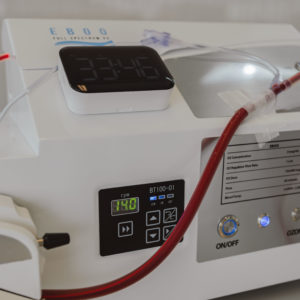
3 min|Dr. Alex Chan
Unlocking the Potential of Sound Therapy
Wellness, Mind Health, HealthHave you ever noticed how sound can have such an influence on our mood? Feeling tired? Put on a upbeat song and you might just feel more energised.
The impact of sound can be profound and sound healing is actually an ancient practice. Studies have shown that vibrational and sound healing therapies are effective due to several interconnected mechanisms, many which modulate the activity of the parasympathetic and sympathetic nervous system. The parasympathetic nervous system is responsible for our rest, digest and relaxation capabilities.Sound healing can activate this system leading to a deeper state of relaxation wherein the production of stress hormones like cortisol is reduced and the release of endorphins which elevate mood is increased. The overall effect of this neurochemical change reduces anxiety and promotes emotional wellbeing.
Every cell and organ in the body has its own natural resonance and frequency. When exposed to specific sound frequencies our cells and organs can resonate and vibrate in harmony promoting optimal function. This process is known as “frequency matching” and using specific sound frequencies we can promote improved cellular balance. The vibrations can also stimulate tactile sensory pathways that further influence the autonomic nervous system.
Through this system, physical vibrations act to promote healing, reduce pain, improve circulation and lower blood pressure. As the stress cascades are reduced and relaxation is heightened our immune system is supported through increased production of anti-inflammatory cytokines, improved activity of natural killer cells and heightened antibody response. These immune responses help to fight off infection and prevent disease.

Given the many benefits of sound healing it’s also great that applying this therapy is simple. Five easy examples are:
1. Listening to Relaxing Music: Music with calming melodies or nature sounds can help reduce stress and promote relaxation.2. Tuning Fork Therapy: Tuning forks create specific frequencies, and you can gently tap them, then place them near your body to experience the vibrations. This elicits the tactile sensations mentioned above.
3. Chanting and Mantras: Simple chants or mantras spoken or sung aloud can be used to centre your mind and body. “Om” is a well-known sound that vibrates the throat and has the potential to stimulate the vagus nerve, which is the longest nerve of the autonomic nervous system.
4. Humming: Humming softly can create a calming effect. Try humming a simple tune or sound and feel the vibrations in your body. These vibrations can also impact the vagus nerve and create a tactile response.
5. Singing Bowl Medication and Gong Bath: Tibetan singing bowls produce soothing tones, while gong baths provide deep, resonant sounds. You can strike the bowl or gong and listen to the tone or better yet enjoy a sound healing sessions where you lie down and let the sound wash over you.

For upcoming events and to register—click here.

Blog References:
https://www.sciencedirect.com/science/article/abs/pii/S1550830723001660?via%3Dihubhttps://pubmed.ncbi.nlm.nih.gov/8642114/
https://www.ncbi.nlm.nih.gov/pmc/articles/PMC6473587/
https://journals.plos.org/plosone/article?id=10.1371/journal.pone.0259312
https://www.mdpi.com/2077-1444/13/2/123
https://medicalndx.com/exploring-science-behind-sound-healing/
Related Articles

3 min|Dr. Alex Chan
EBOO for Chronic Inflammation: A Natural Approach for Systemic Relief
Regenerative Medicine, EBOO Therapy
3 min|Dr. Alex Chan
EBOO Therapy for Autoimmune Conditions: Exploring the Potential Benefits
Autoimmune Disease, Regenerative Medicine, EBOO Therapy



